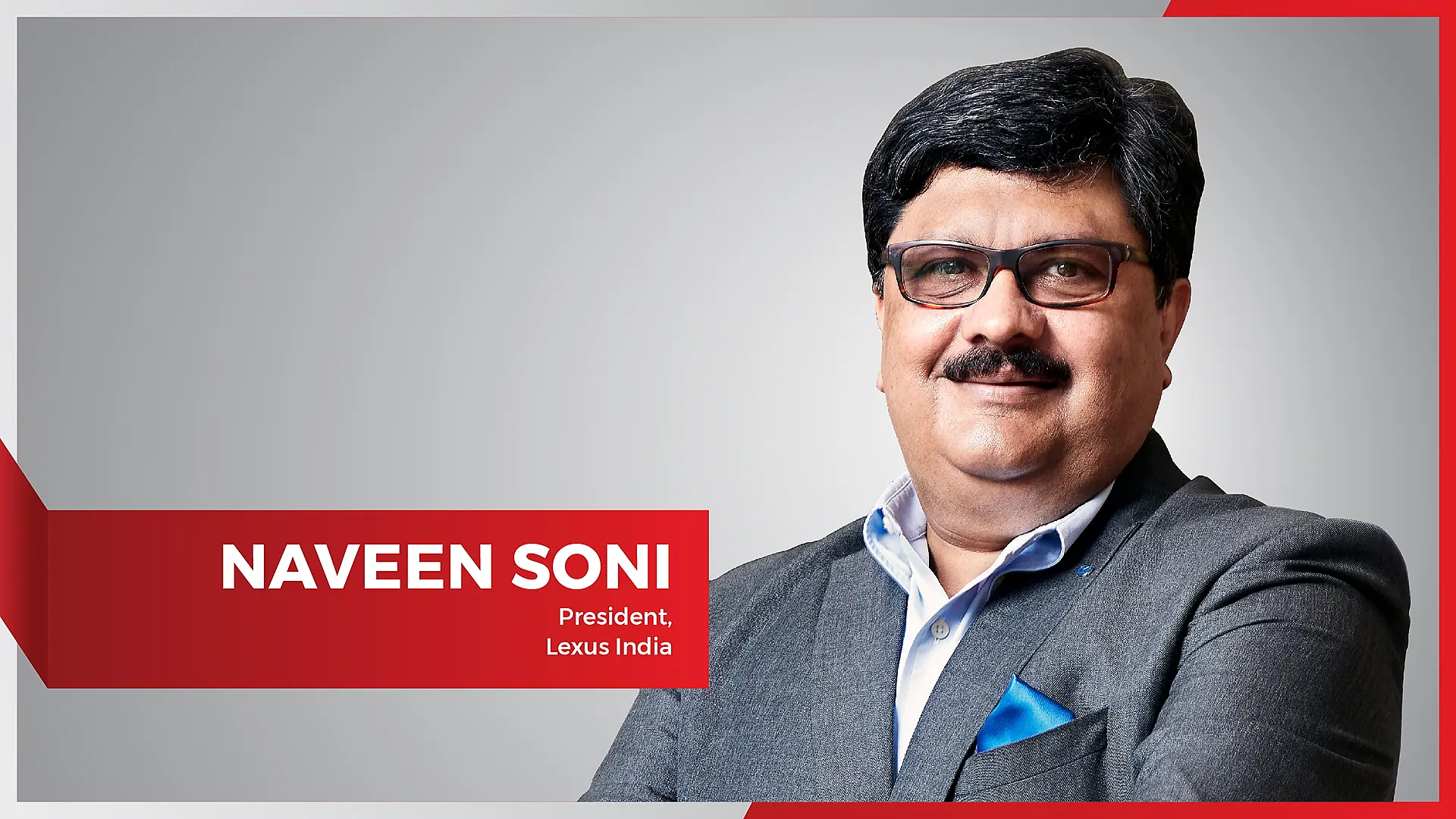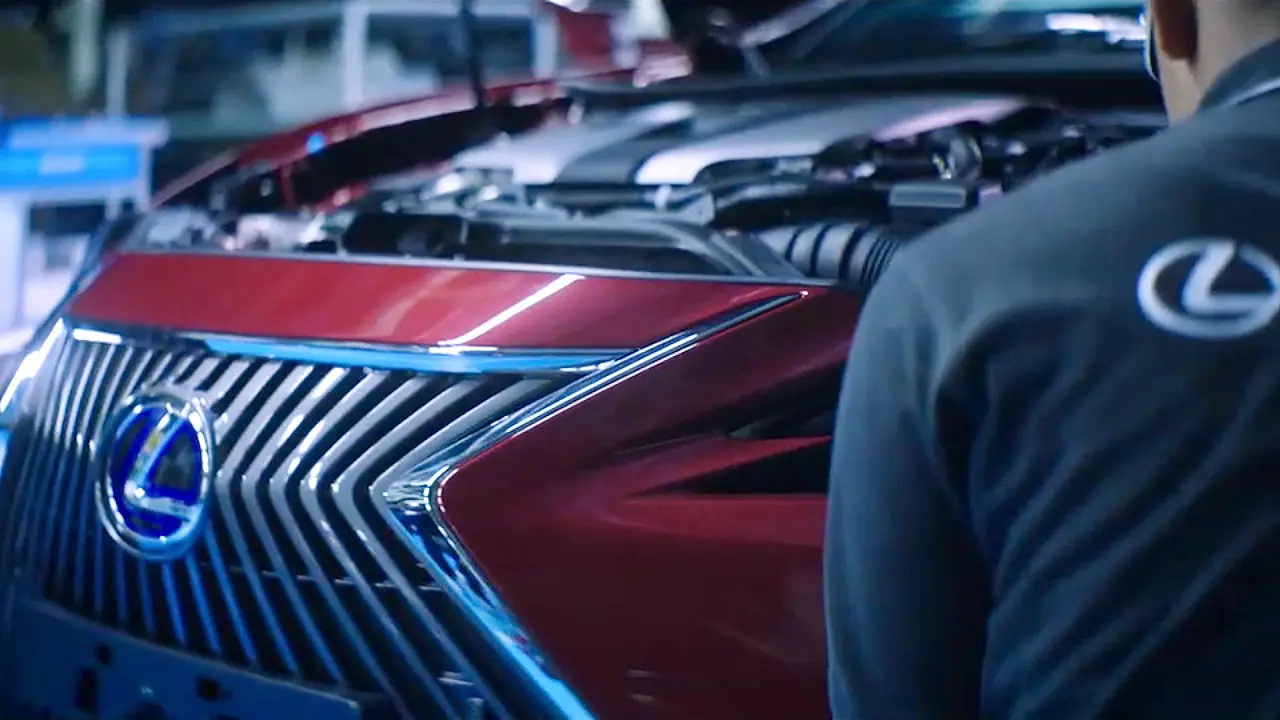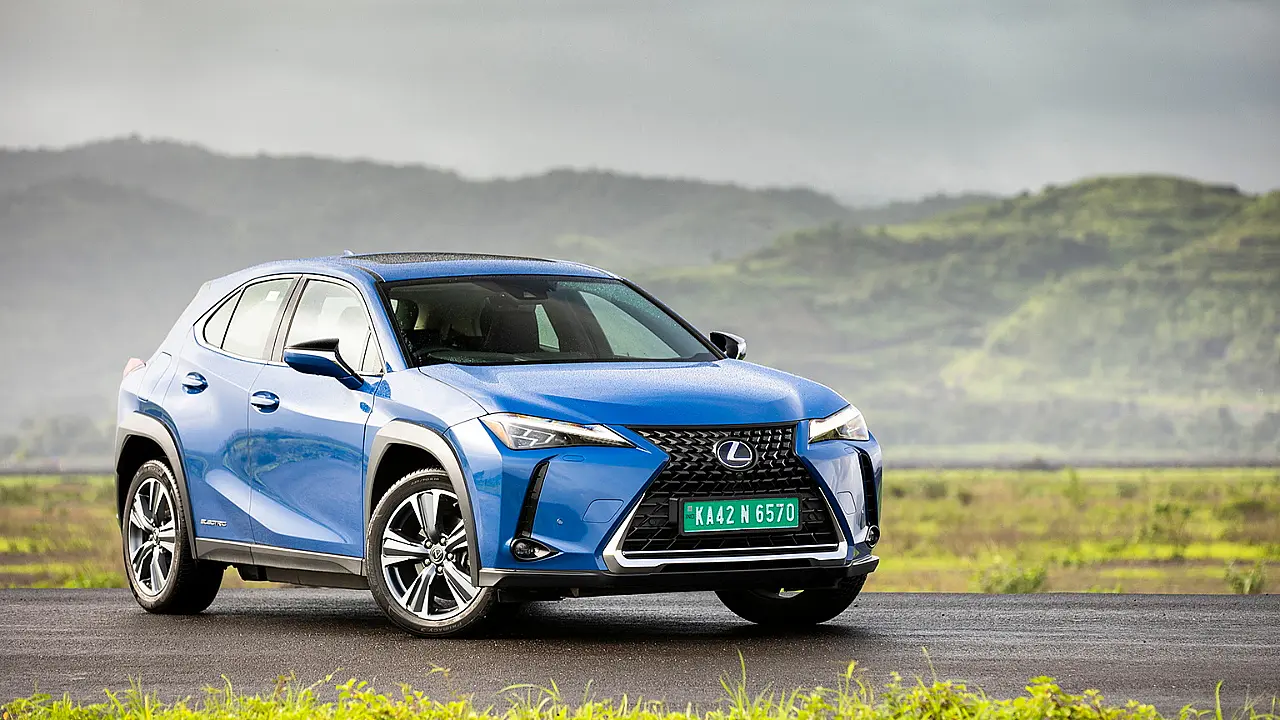
Naveen Soni is a veteran automotive professional with over 29 years of experience in the industry across areas covering business development, marketing, sales, PR and CSR. He has a good grasp on the triggers of purchase for a luxury consumer, be it the YOLO effect or the choices they want to make as enthusiasts for sustainability, wellness, and panache. Taking forward the Lexus philosophy of exceptional guest experience – Omotenashi – he was instrumental in shaping the Lexus Life programme aimed at providing amazing experiences throughout the guests’ ownership lifecycle.
What made Lexus choose India as one its manufacturing hub?
We came to India in 2017 and soon realised that there is a big handicap we are fighting against – we are CBU fighting against CKD. The duty differential between the two lies between 60-80%. This differential becomes a handicap for growth and acts as a bottleneck to be competitive in the market.
At the same time, the challenge was that local production is only happening in four countries, including Japan, US, Canada and now one line in India. So, a lot of convincing had to be done to the head office, that India too can produce the same quality of craftsmanship and detailing that any other ‘Takumi Craftsman’ can do.
Meanwhile, from the global point of view, locally produced vehicles bring higher volumes. The scale brings a lot of advantages such as cost realisations, and it does help in the long term to improve the business situation.
The move has proven to be a good experiment for us because of the customers’ acceptance of the product. They’ve never felt that the product has been produced in India versus any other product that Lexus produces elsewhere. Once the product moves out of the factory, it’s made by Lexus.
How did you ensure the same level of craftsmanship from the Indian Takumi Craftsmen?
Typically as a Takumi Craftsman needs to have an experience of more than 60,000 hours, and their average age ranges from 45-47 years. But thanks to the Toyota Technical Training Institute (TTTI), the average age has come down to 25 years.
We get these students as young as 16 years and give them free education and train them on various aspects of manufacturing and automobile engineering, while giving importance to ‘body and mind’ We even pay them a stipend. In fact, two-thirds of the line men that are working at Lexus India come from TTTI.
Earlier, these boys and girls used to go to Japan to get trained by the ‘Takumi Master’ but after retirement, the ‘Takumi Master’ has moved to India and supervises the production line and ensures the utmost quality of work. These enablers gave Japan the confidence that India too can be a manufacturing hub for Lexus.
What were the challenges faced when sourcing the components locally?
Actually none. The biggest advantage is that the Indian vendor industry, across various tiers, are producing world class output. They are not only producing for India alone, but for the global auto industry as well.
However, the biggest challenge for us is to produce the same quality at a much lower volume. The suppliers here have the finesse and expertise to scale it up. However, to produce at low scale, and ensuring quality without any compromises at the same time is a bigger challenge.
Even if you count the total luxury car market in India, we’re talking about at best 40,000 cars a year. That is not even good for a mass producer. So obviously, there’s always a trade-off on one side, while on the other side, the cost goes up when you go from CBU to CKD.
Are low volumes a reason why Lexus India is stuck with only one locally produced vehicle?
Yes, this could be one reason, as to localise, you will have to put in time, money, energy and effort. But more importantly, I think, what we have to see is that, as a company, we’ve always taken small but firm steps at a time.
We started with the ES, and we’re trying and testing out people’s capability, vendors’ capability, and market acceptance, among other factors, so that we can be confident to serve the next product with confidence whenever it happens. People’s capability to make quality products gives us reasonable and more confidence that yes, we are in a position to produce locally.
However, it’s not just a question of capability, market testing or scale testing. Being a multinational company, it’s a question of understanding various other factors – which country, which market needs priorities. With limited resources, deciding where to place resources becomes a very important task. It’s about long term potential and long term commitment.
That’s the reason we said we’ll take a big leap next year, and decided to put our hands into the Auto Expo. The idea is to showcase our future products and technologies. Being one of the youngest luxury car makers in the country, we want to showcase to people that a late entrant can be the best one.

What opportunities does Lexus see in the Indian auto market?
The biggest opportunity is that in India the luxury car market currently makes a total of only 1% of the entire car market. If we were to compare this to other countries, China’s luxury car market comprises 14-15% of the total car market, while the US is about 20% of the overall car market. So, there is enough and more headroom available.
The government is promising to grow the economy to a $5 trillion economy. If we go from the current $3.5 trillion to $5 trillion, the number of millionaires that get added every year in this country is going to outstrip the global demand by two times.
These are the enablers for any luxury car market. We are just at the cusp of a breakout. If this continues in the future, and if we can see this growth going into the future, we are definitely assured that India has got a good future not only for the luxury car market but for the overall motorisation of the country.
These growth figures will also act as an enabler for locally produced luxury vehicles. If the volumes grow from 40,000 to 60,000, then obviously, it becomes more tempting for the global allocators of resources to look at this market differently. However, local production of these vehicles will again have multiple complexities of decision making. It is just not decided by market sales, but depends on which product, market and category is growing and what are the segments that are showing promise.
How do you plan to differentiate in the market?
We don’t want to believe that we are a mobility company. We are a luxury lifestyle partner and want to give an experience to our guest; something he would always cherish, remember and enjoy.
We institutionalised a customer engagement programme called Lexus life.
Customer engagement could be in any form or shape, but the offerings extend beyond the mobility needs. For example, collaborating with a watch company and offering the customer a different experience in terms of watches or presenting jewellery for him or his family. Health and wellness is another important criteria we are investing a lot in. These aspects are covered under the customer engagement programme by Lexus.
The effort we are putting in now is to see if the company can be a partner towards needs that are beyond mobility. Starting with the delivery process, for instance, when we deliver a car, we do an extensive understanding of the person’s trigger point and passion points. We tailor every delivery to meet the expectation of that person, and no two deliveries are done at the same.
We have tried to implicate this habit, right from the day Lexus was born, to go that little extra to offer that little extra, which makes a big difference in the journey of that customer.

What alternative fuel options are Lexus looking at offering in India?
We brought the UX300e to India in June this year as an experimental vehicle. These vehicles definitely give you joy of driving because of the sudden acceleration that electric vehicles can provide.
We were testing out the technology. People will always be concerned about battery range, charging time, infrastructure, and the longevity of the battery because batteries and motors alone are about 60% of the vehicle cost. In such a scenario, we have to be sure that we have adapted the product to the requirements of the customers.
The biggest challenge for us, however, is the extreme heat and dust conditions that are the biggest enemies for the longevity of a battery. These will remain a challenge unless we move to solutions like Solid State Batteries. Besides, these batteries also have faster charging times, which will again help address the customer requirements.
So, before moving to a new technology, we need to understand the product, the market fit, the right technology and understanding of consumers about this technology. Only then can we offer the right product for the Indian market.
Besides EVs, hydrogen, hybrid, ethanol, CNG, among others, also promise a zero carbon future. It is for the consumer to decide which the best product is, and it is for the company to decide where to put its resources as each one technology is taking you to the same pathway.
As far as Lexus is concerned, we mentioned in December 2021 that we would like to see an electric future. By 2035, all Lexus cars will be electric.
Also Read
Lexus India Launches Innovative Guest Experience - Virtual Dome